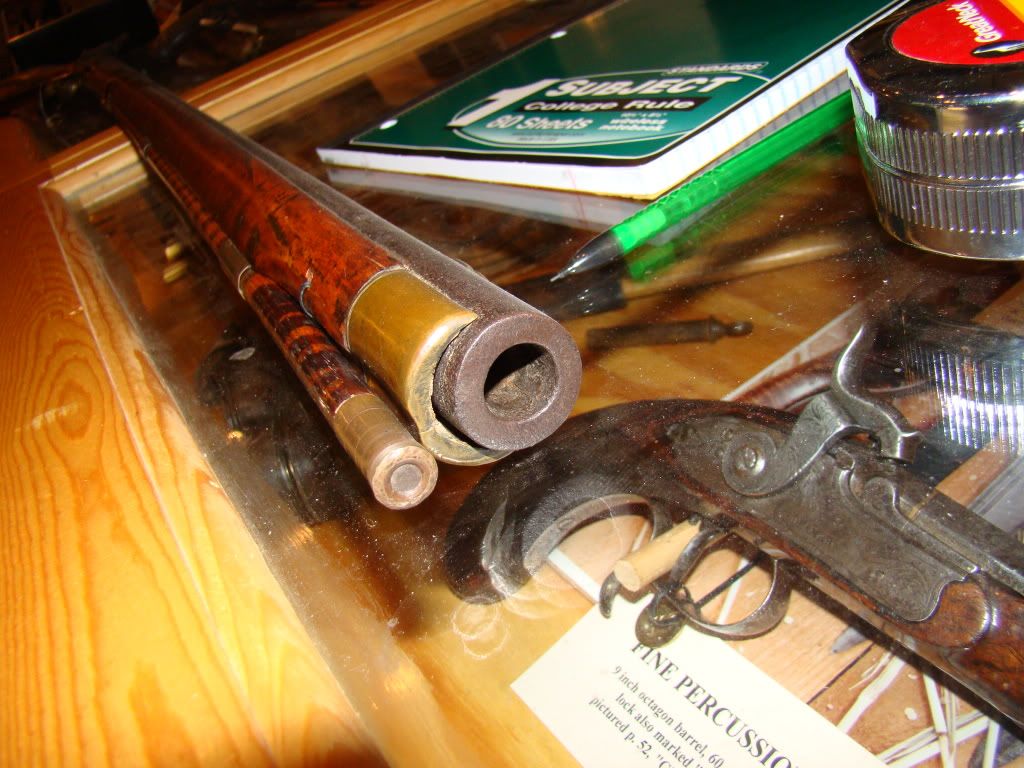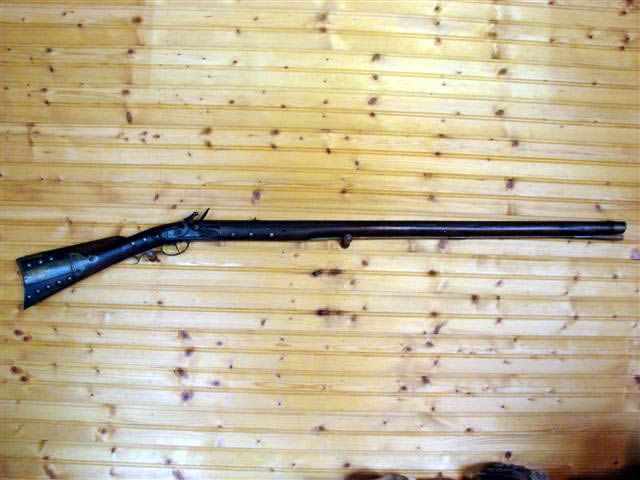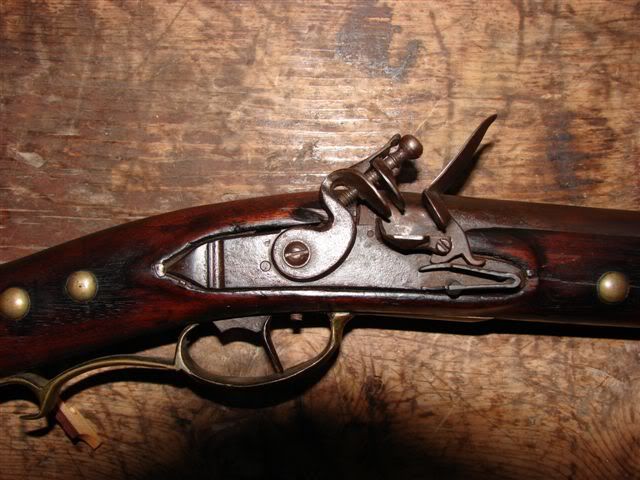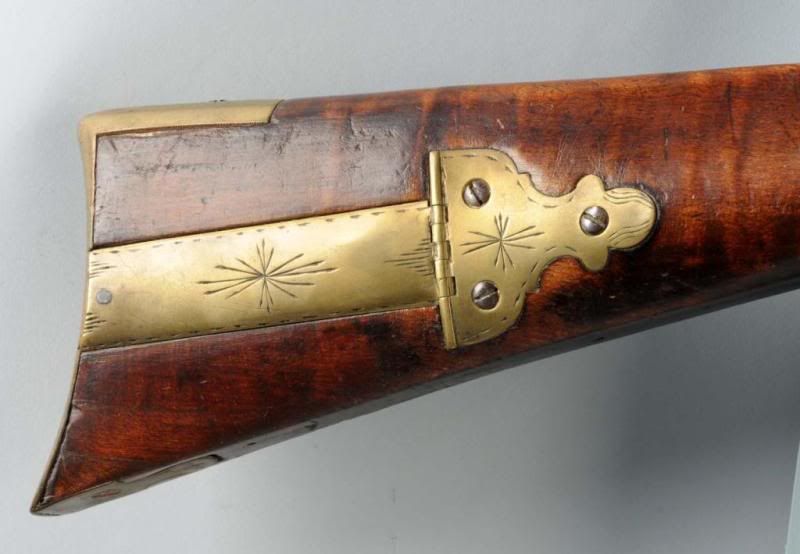|
|
Post by pathfinder on Jul 20, 2010 8:46:40 GMT -7
A friend of mine is building a 1792 contract rifle for me and I was wondering if anyone had come across anything related to them in the fur trade other than Corps of Discovery? I know Lewis sold the balance of rifles upon return....correct?
|
|
|
|
Post by Librarian on Jul 20, 2010 10:18:29 GMT -7
How do!
Tough one...
Very little is known about the 1792 Contract Rifles due to confusing and sketchy records and documents.
Sec. of War Knox authorized Geenral Hand to contract for 1,000 at $12 each from the Lancaster gunmakers, as a folow-up on President Washington's desire to raise a battalion of riflemen to aid the Western settlers.
Somewhere the numbers were increased, as in 1792 alone somewhere between 1250 and 1300 were delivered. JUmpingn to 1794, another 1844 were received from Lancaster AND York counties for the Army as well as Indian Departments.
Similar numbers run through the 1790's falling off in 1800. In 1806, the last 88 were received.
It is guessed that some 10,000 were made between 1792 and 1806 overlapping the 1804-1807 production of the Model 1803 Rifles but before the Contract Rifles of 1807.
The contractors such as Dickert, Gonter, Graeff, Demuth, Kline, Faiot, Brong, Messersmith, Gilman, Swope, Getz, Albright, Simon, Albert, Angstadt, Heckert, Littler, Miles, Morrow, Nicholson, Pickel, Welshans, Meyers, and Whetan also appear so it seems the contractors sub-contracted to local makers in their area as well.
The 1792 rifles were not well liked, and quantities delivered appear to have been smaller than anticipated- leading to the development of M1803/M1814 Rifles bypassing the criticized quality of the PA rifles in favor of a the Government run Harpers Ferry armory
IIRC,, there are no known surviivng 1792's (?), and their history seems to have taken a back seat to the real and myth associated with the M1803.
|
|
|
|
Post by pathfinder on Jul 20, 2010 12:29:53 GMT -7
I found this.............. asoac.org/bulletins/97_flanagan_1792.pdfKarl's version won't have the typical Harper's Ferry Lock but a Siler, the rest of the furniture will be HF...ie patch box. butt plate, trigger guard, side plate. p.s. I remember you posting your "avatar" as nostalgic photo on another board a few years ago.......circa 1970's correct? |
|
|
|
Post by sean on Jul 20, 2010 13:11:44 GMT -7
PF, That's a great article. Those ASOAC bulletins are awesome, aren't they. That organization is open to members by invite only and that's the only way you can get a subscription. I talked with their head editor a while back though. They are trying to get a complete digital index together of all of their publications. Reprints are not available through them, but these did go to the University of NM library in ABQ. That means ILL requests for articles that are not available on their web page may get you scans of old articles. I was able to get one old article from one of these done by William Reisnor on early Hawkens. I need to go back and revisit those bulletins and figure out what else I can dig up... Man, maybe I should have taken the 'Librarian' moniker, eh?  Anyway, as the article states some of the 1792/4s were certainly surplussed, but how many, where and to whom is pretty much up in the air. My general feeling is that beyond L&C, few of these rifles likely went west to the frontier in military hands and the surplussing would have happened mostly back east. Also, I've always liked the 1807s. I've done a fair bit of looking into those. I recall somewhere reading that some of these guns were also made by Dickert, DeHuff and Company for the Indian trade with silver inlays. I've never seen one with inlays, but I have seen at least one that had been tacked up with several cast brass tacks and was rebarreled with a cut off 1816 musket barrel. When I first saw pictures of these guns, I thought the roughly .54 cal, 38" o/r barrel would be a handy sucker and a great elk gun. Truth is they are pretty darned burly barrels. The two signed Dickerts that I've been able to handle were about 1 1/16" at the breech and 1" at the muzzle with no perceptible swamp. They were pretty darned muzzle heavy even compared to 3 1/2' swamped barreled guns. The barrels were thick enough at the muzzle that the brass front sights were dovetailed in like a normal swamped octagon barrel. The two I handled were likely 10 lb guns pretty easily. Folks want guns to be lighter these days, but 10-11 lbs was pretty average back in the period. In general, these guns were built to take a lot of abuse and keep on shooting. They certainly did that. One of the Dickerts I've handled was converted to percussion with a Leman lock which suggests it saw both public and private service for maybe 40 years or more. I'd have been tempted to shoot it today if I owned it. Sean |
|
|
|
Post by Librarian on Jul 20, 2010 13:41:56 GMT -7
How do!
"p.s. I remember you posting your "avatar" as nostalgic photo on another board a few years ago.......circa 1970's correct?"
Correct.
Mountainguy "research" from 1978-1981, in 1981.
Bwahahahahahahahaaa.
|
|
|
|
Post by pathfinder on Jul 20, 2010 21:08:35 GMT -7
My Leman and my Business rifle both weigh in the 10lb range, so I am used to heavy guns........but I have to say I enjoy carrying the officer's fusil and the "Brass lizard" gun more. I am guessing the contract gun will be in the 10lb range as well.....I just wish it was in a bigger caliber..........been a long time since I hunted with a .50 caliber.  Michael...........those were the good old days! Life was less complicated! ;D |
|
|
|
Post by sean on Jul 20, 2010 21:49:46 GMT -7
Here's the muzzle of one of those Dickert 1807's  Sean |
|
|
|
Post by pathfinder on Jul 21, 2010 8:46:49 GMT -7
Sean
is it octagon to round......54 cal. ?
|
|
|
|
Post by sean on Jul 21, 2010 9:46:07 GMT -7
PF, Yes. Those barrels were 38" o/r. Usually octagon for about 14" or so with no wedding rings. Bores were about 32 bals to the pound or roughly .53-.54. Some of these 1807s appear to have gone to natives and may have been surplussed in a way that they might have gone west. Here are a couple of shots of what appears to be an 1807 by Peter Gonter. The barrel is not original to the gun. I believe its off an 1816 Musket. Anyway, the gun was tacked up with cast tacks, which suggests some period native use    Back on the 1792... That article mentions that most of the 1792/4s were shipped to the Pittsburgh area. There are about 5-6 of those known and I believe they've all been found in PA. However, Pittsburgh area was a major node on the drain-pipe that led west. If they were surplussed there, I would say that they could have gone West. Finally, here's a gun that was a commercial gun by Peter Gonter that is closely linked to the 1972 and 1807. It has roughly a 3.5' barrel and a low-end Ketland import lock with an unbridled frizzen.   Sean |
|
|
|
Post by pathfinder on Jul 21, 2010 11:27:23 GMT -7
Sean
the gap around the lock plate........does that suggest the lock was replaced or is it just shrinkage? Karl has already inletted a Siler lock so the resemblance is there. The patch box will be HF type though.
Also I am glad to see a bit of curl in the stock as mine will have some....a lot? I know on the Lemans there was an effort even with the trade guns to put artificial stripping on the stocks.....there must have been some value in the extra effort!
Doug
|
|
|
|
Post by pathfinder on Jul 21, 2010 11:34:17 GMT -7
As side note......I met an old guy years ago in Bonderant Wy at a little black powder shop in an old log cabin, who was convinced that the '92 were the guns that L&C had refurbished at HF..............that was years "late 80's" before there was much controversy.
|
|
|
|
Post by sean on Jul 21, 2010 13:32:34 GMT -7
Sean the gap around the lock plate........does that suggest the lock was replaced or is it just shrinkage? Karl has already inletted a Siler lock so the resemblance is there. The patch box will be HF type though. Also I am glad to see a bit of curl in the stock as mine will have some....a lot? I know on the Lemans there was an effort even with the trade guns to put artificial stripping on the stocks.....there must have been some value in the extra effort! Doug Doug, I suspect that lock is original to the gun. Most of the torque from the mainspring works on the tail of the lock. Its not uncommon to see an original lock plate that is really loose in the rear and tight up front like that. I haven't really decided for sure. The cock looks original or blacksmith made, as does the frizzen. The barrel has no capflash scarring on it, but I don't think its original. I talked with the owner and he said it was about .69 and smoothbore which suggests 1816 musket barrel. The barrel is also not quite inlet all the way down at the breech. Most of the 1792s I can recall off the top of my head had some sort of finial on the box. But hey, that's like 5-6 out of 3500 and they all show significant variation. There is a C. Gumpf 1807 rifle in Garavaglia and Worman's book that has a 1803 type box. It also has a HF lock on it dated 1814. Deringer also made some rifles with a sort of outsized HF boxes on them during the period around the end of the War of 1812. These were for both military contracts and civilian sales. If you can find Tait's first article on the 1792, its a good read. There's one Dickert 1792 in there that someone dressed up with a Daisey head patchbox with the word "Pizzen" engraved on the door. I was talking with Reeves Geohring a year or so ago about that and he told that he not only used to own that gun, but knew the guy who upgraded it and used it as a target shooting gun in the 1950's. Sean |
|
|
|
Post by pathfinder on Jul 21, 2010 16:32:44 GMT -7
Sean
I think I have a photo copy of the Tait article..I'll have to look.
If I was going to choose a lock for a '92 that would have been issued later, would I naturally assume it would be one of the HF locks or would that be only if it was of the few hundred that were stored there?
My builder sent an email stating that he might see if a HF lock plate would cover the Siler opening. I hadn't asked him to do so, but I think he thought I might prefer it. Now if I somehow was to do a L&C impression (which I was going to do until I decided to do colonial for our school) ...anyway, the HF lock might be more appropriate. You're the expert here, what is your opinion? I have a Siler on my Leman and have always loved it............but don't know if it's a Davis 1803 lock I assume it would be just as good.
Doug
|
|
|
|
Post by sean on Jul 21, 2010 17:59:11 GMT -7
Doug,
While some argue which rifles the L&C Expedition was carrying, everyone agrees that HF made new locks for the Corps. That said, a Siler is correct for a 1792, but a Siler plate is 0.05" longer than the Davis HF lock. I've used both and find the Siler to be the better of the two if it was built by the right person.
Sean
|
|
|
|
Post by pathfinder on Jul 22, 2010 13:27:25 GMT -7
Karl sent me an email and said he thought that Track of the Wolf HF lock would fit the mortise.......he ordered one to try and see. Said if it didn't fit he'd have an extra lock!  |
|